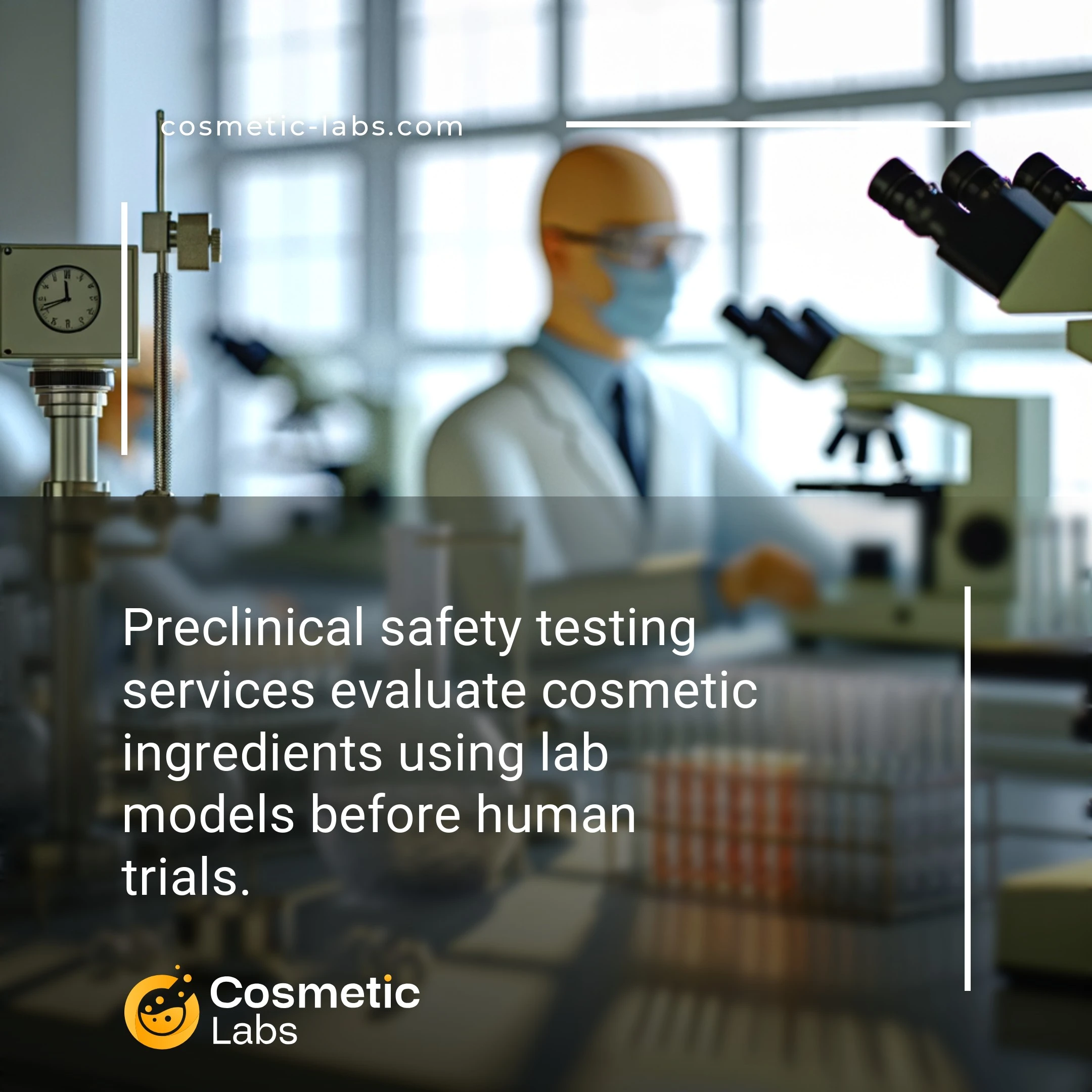Preclinical Safety Testing Services for Cosmetic Product Development

What is Preclinical safety testing?
Preclinical safety testing is the laboratory evaluation of cosmetic ingredients and formulations before human use, using cell cultures, biochemical assays, and alternative methods to predict skin reactions and toxicity. Find a lab to conduct irritation, sensitization, and phototoxicity tests that meet EU and FDA requirements, to help you validate product safety before clinical trials.
Why do you need this service?
Beauty brands leverage preclinical safety assessments to validate new preservative systems before full formulation, saving months of development time. Our partner labs test ingredient interactions at bench scale, identifying potential irritants or incompatibilities to keep your timeline on track.
Who provides Preclinical safety testing services?
All cosmetic labs providing Preclinical safety testing services
There is no company providing these services at the moment.
Preclinical Safety Testing for Cosmetic Products
Before your beauty product reaches consumers, preclinical safety testing validates its safety profile through laboratory assessments. Our platform connects you with specialized labs that conduct these tests to meet regulatory requirements and protect your brand reputation.
Core Safety Assessments Available
Partner labs on our platform test cosmetic formulations using established protocols. They can evaluate skin irritation potential through patch testing and measure pH levels to prevent chemical burns.
Standard testing services include:
- Cytotoxicity screening on cell cultures
- Microbial challenge tests for preservative efficacy
- Stability testing under various conditions
- Heavy metal analysis for raw materials
- Allergen screening for common sensitizers
Most labs complete basic safety panels within 2-4 weeks, providing detailed reports that support your product claims and regulatory submissions.
Specialized Testing for Product Categories
Different cosmetic categories require specific safety evaluations. For instance, eye area products undergo ocular irritation tests, while color cosmetics need pigment purity verification.
Labs in our network offer targeted assessments for:
- Sun care products: SPF validation and photostability
- Anti-aging formulas: skin penetration studies
- Natural cosmetics: botanical extract safety profiles
- Baby products: enhanced hypoallergenic testing
These specialized tests help you substantiate product claims while meeting market-specific regulations. Connect with labs that understand your product category’s unique safety requirements.
Real-World Applications of Preclinical Safety Testing in Cosmetics
Preclinical safety testing forms the backbone of product development, determining whether formulations move forward to human trials or return to the drawing board.
Skin Sensitization and Irritation Assessment
Labs employ in vitro preclinical safety testing methods like the h-CLAT and DPRA assays to predict allergic reactions before any human exposure. These tests evaluate how ingredients interact with skin proteins and immune cells.
For a new peptide serum, technicians might run a battery of tests over 14-21 days. Results guide formulation adjustments—reducing active concentrations from 5% to 2% if irritation markers exceed thresholds, or adding soothing agents like centella asiatica extract.
Ocular Safety Evaluation for Eye Products
Eye-area cosmetics undergo rigorous testing using reconstructed human corneal epithelium models. The EpiOcular MTT assay measures cell viability after exposure to test formulations, providing ET50 (“Effective Time 50” = the time it takes for a product to reduce healthy cells by 50%) values that predict eye irritation potential.
When developing a waterproof mascara, labs test both the product and its removal process. A formula showing 85% cell viability after 60-minute exposure typically proceeds to reformulation, while anything below 50% requires immediate ingredient substitution.
| Test Method | Application | Timeline | Key Output |
|---|---|---|---|
| h-CLAT Assay | Skin sensitization prediction | 48-72 hours | EC150/EC200 values |
| EpiDerm SIT | Skin irritation assessment | 24-48 hours | Viability percentage |
| BCOP Test | Eye irritation screening | 4-6 hours | Opacity/permeability scores |
| 3T3 NRU | Phototoxicity evaluation | 24 hours | PIF/MPE values |
Ready to implement preclinical safety testing for your cosmetic formulations? Connect with specialized labs on our platform that offer these validated testing protocols and regulatory guidance.
